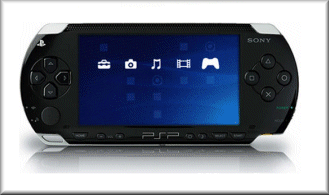A small collection of video cards

This is my miniscule collection of old video cards originating from the period 1996 - 2005. I have to start collecting information on them some time, so I thought it would be smart to do it on my blog. This article will be updated as time constraints allow.
The suspects, starting from the top of the left row, are:
1. S3 Virge/GX - this little PCI 2D monster was created by S3 Graphics at the height of 2D acceleration in 1996. It sports an average-for-its-time 2MB of video memory (64bit width, which is quite good, I suppose). It did have support for primitive 3D-acceleration, but this feature was so poor, that people actually called this card the 3D-decelerator. Neveretheless, it has a great 2D picture, supporting a very clear-looking 75 Hz refresh rate for resolutions up to 1280 x 1024. The only complaint is that it cannot display 32bit colour depth images at resolutions greater than 800x600. This means that Windows XP graphics looked a bit funny at 1024x768. I mean, it was perfectly usable and it did not even bother me so much, but the difference is definitely there. This card was manufactured for Compaq.
2. ATI Rage 3D LT - I was a bit surprised at what this unassuming 8MB AGP card can do. According to Wikipedia, it "...the Rage LT PRO can drive two displays with different images and/or refresh rates with the use of integrated dual, independent CRT controllers." That's quite hardcore for a video card from 1998. This card certainly sports some degree of 3D-acceleration, however I would not like to play Quake III or anything newer on it.
3. Hercules 3D Prophet 4000 XT - this card sounds like aristocracy, doesn't it? Well, it's not. In fact, it was more like a bastard redheaded step-son with only one, but superhumanly skillful arm. How so? Well, it was kind of disabled when it was launched in the very end of 2001 because it did not support Transform & Lighting and it went up against the original ATI Radeon and GeForce 2 MX series, which obviously did. On the other hand (no pun intended), despite being disabled in a way, it did have a very special ability - it could do Tile Based Deferred Rendering. In layman's terms it means that only those polygons that are immediately visible in a frame are rendered. Other GPU architectures still render ALL the polygons in a scene, whether they can be seen or not. The result? In titles that are not limited by heavy use of T&L, the Kyro I GPU held its own against GeForce 2 MX and Voodoo 4500, beating both at 32 bit color depth at resolutions greater than 1024x768. That's one heck of an accomplishment. As for other technical data, it carries 32MB SDRAM and works at 125/125MHz. Also, quite a notably for its time, it renders everything internally in 32 bit color depth, meaning it can do 32 bit color depth without a performance penalty. Here are some numbers:
12 million transistors
0.25 micron process
125 MHz core / memory clock
32 MB SDRAM
2 Pixel Pipelines
250 megapixel/s fillrate (750 megapixel/s equivalent fillrate)
128-bit data path to memory (2GB/s bandwidth)
32-bit z-buffer
Tile rendering architecture
Full Scene Anti-Aliasing (2x and 4x)
Environment Mapped Bump Mapping (EMBM)
8-Layer Multitexturing
Motion compensation support
Support for AGP 4X, SBA, DiME
DXTC Texture Compression
Full OpenGL ICD
270 MHz RAMDAC
4. ATI Radeon VE 32MB - this one of the weakest cards in this lineup, mostly because it was meant for office use only. The only redeeming feature of this card is support for Hydravision (dual RAMDACs provide very good dual monitor capability). It's Transform & Lighting support has been disabled and it's memory bus is only 64 bits wide, resulting in a sub-par performance, to put it mildly. The chip that this card is based on was launched in summer 2000. Here's what the numbers have to say:
30 million transistors
0.18 micron process
167 MHz core / 183 MHz memory clock
32 MB SDRAM
2 Pixel Pipelines (3 Texture Mapping Units per pipeline)
167 megapixel/s fillrate and 500 megatexels/s fillrate
64-bit data path to memory (2,9GB/s bandwidth)
Support for AGP 4X, PCI
Dual RAMDAC
5. Now we come to the top of the right row, occupied by a real gem - the GeForce 256 32MB DDR. Launched in the end of 1999, it is hard to underestimate the impact that this card had on the marketplace. Being the quickest 3D accelerator at the time of its launch (and for quite some time to follow), it introduced the famous Transform & Lighting feature. Up to this time, all the geometry in 3D games had been handled by the CPU. GeForce 256 was the first card to do this in hardware, thus freeing up valuable CPU resources. In fact, many considered it to be an excellent card to upgrade to from a low-end CPU, such as the Celeron 400. The performance benefits of such a move were incredible. Also, this is the first video card that made gaming at 1600x1200 resolutions viable.

